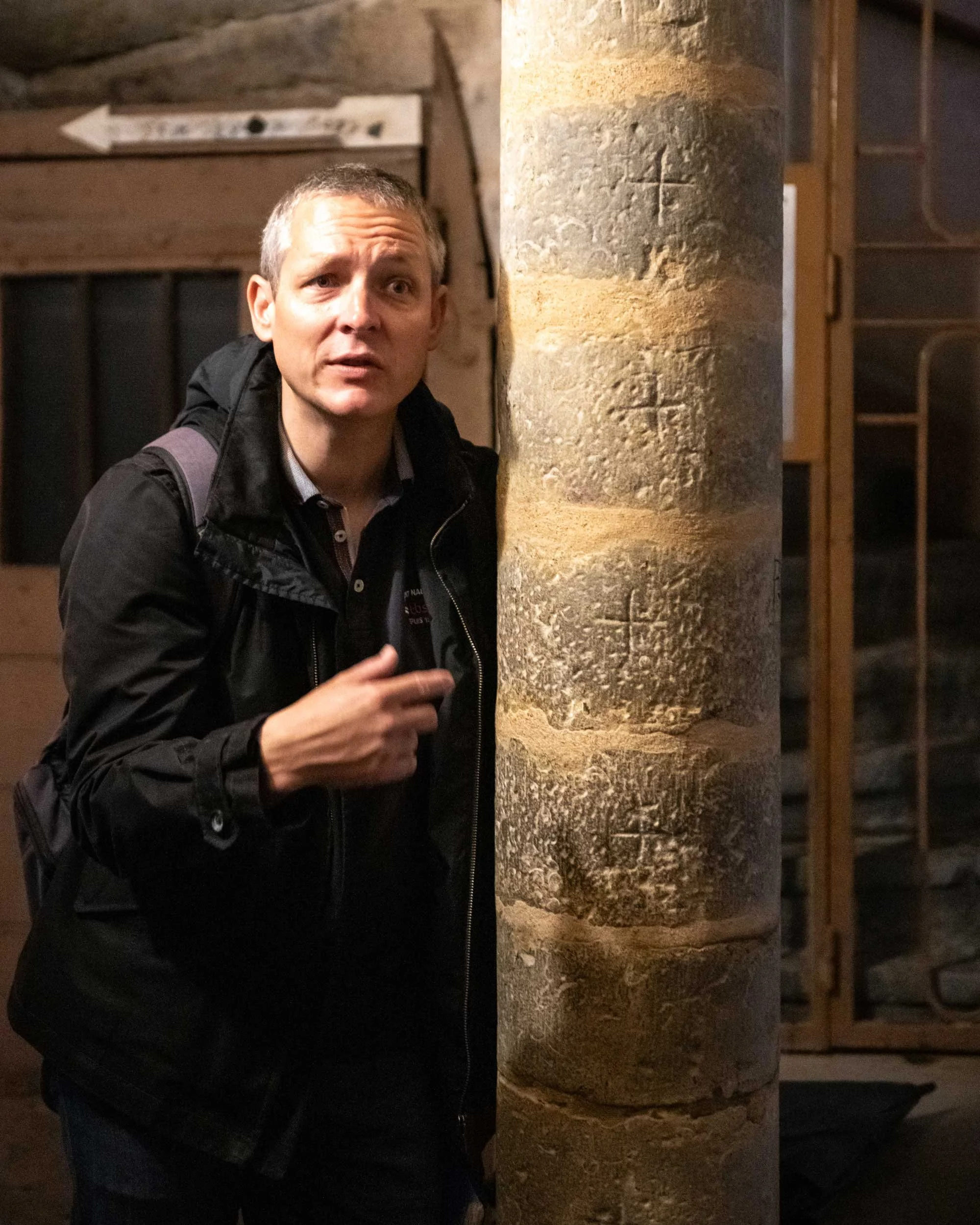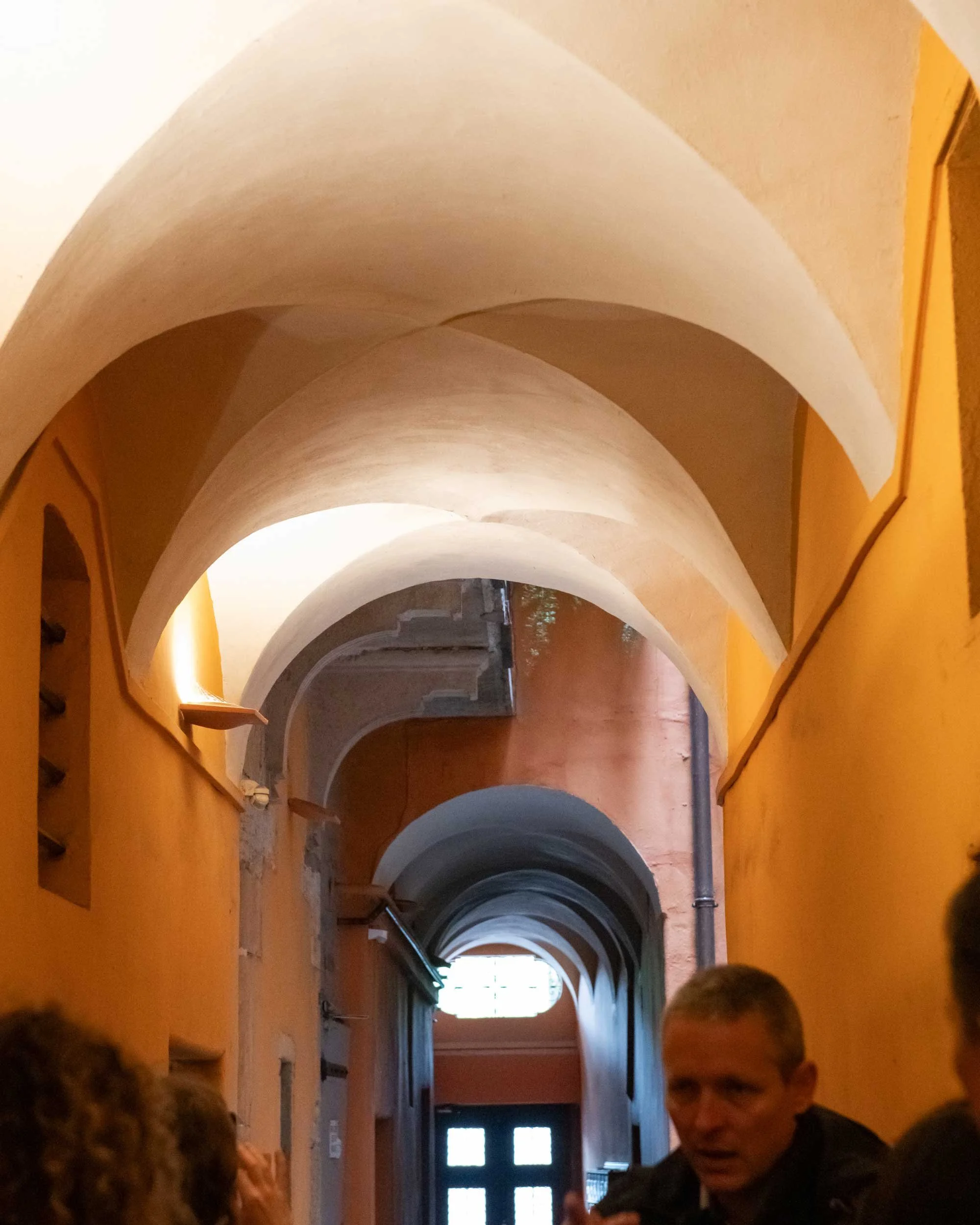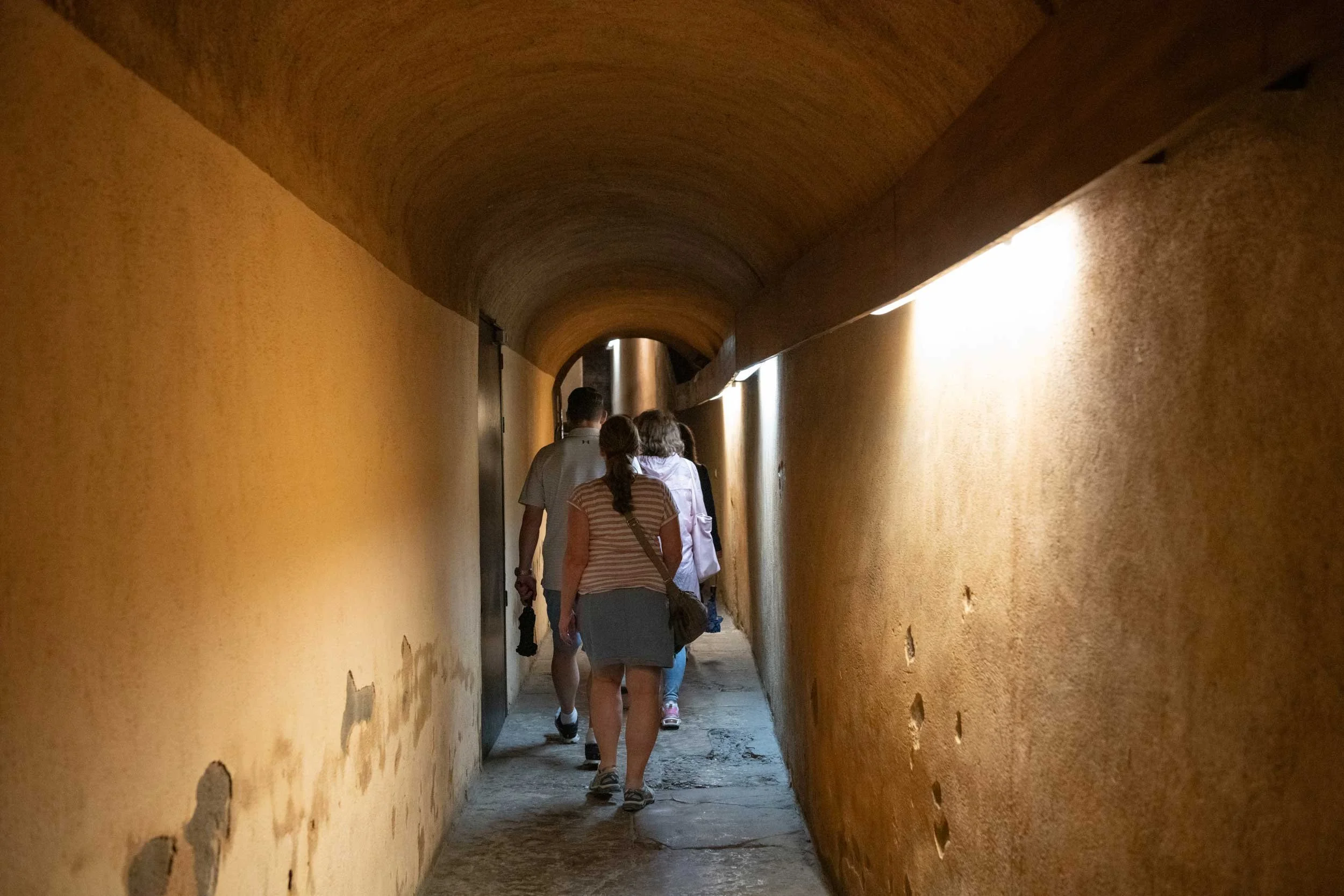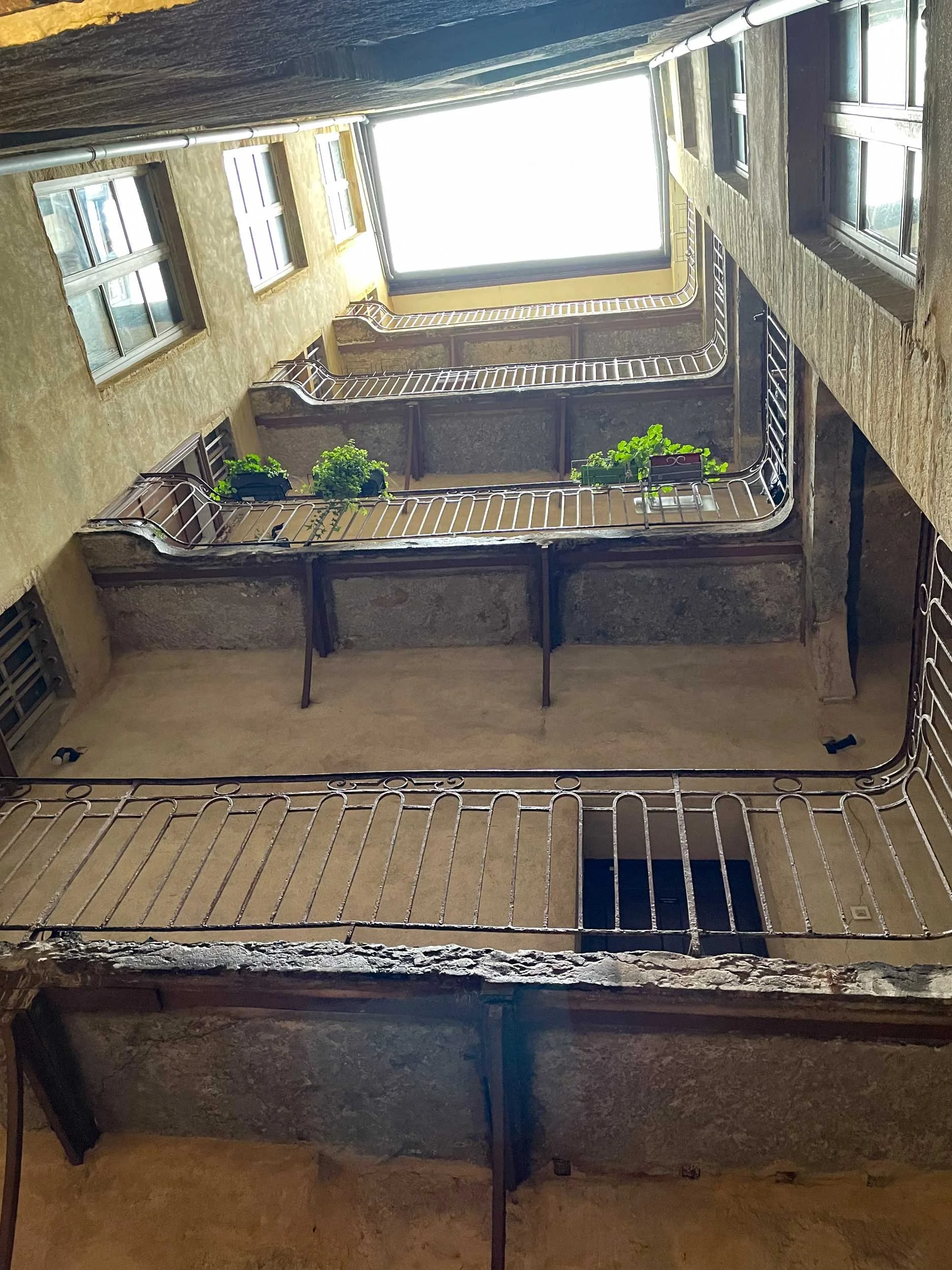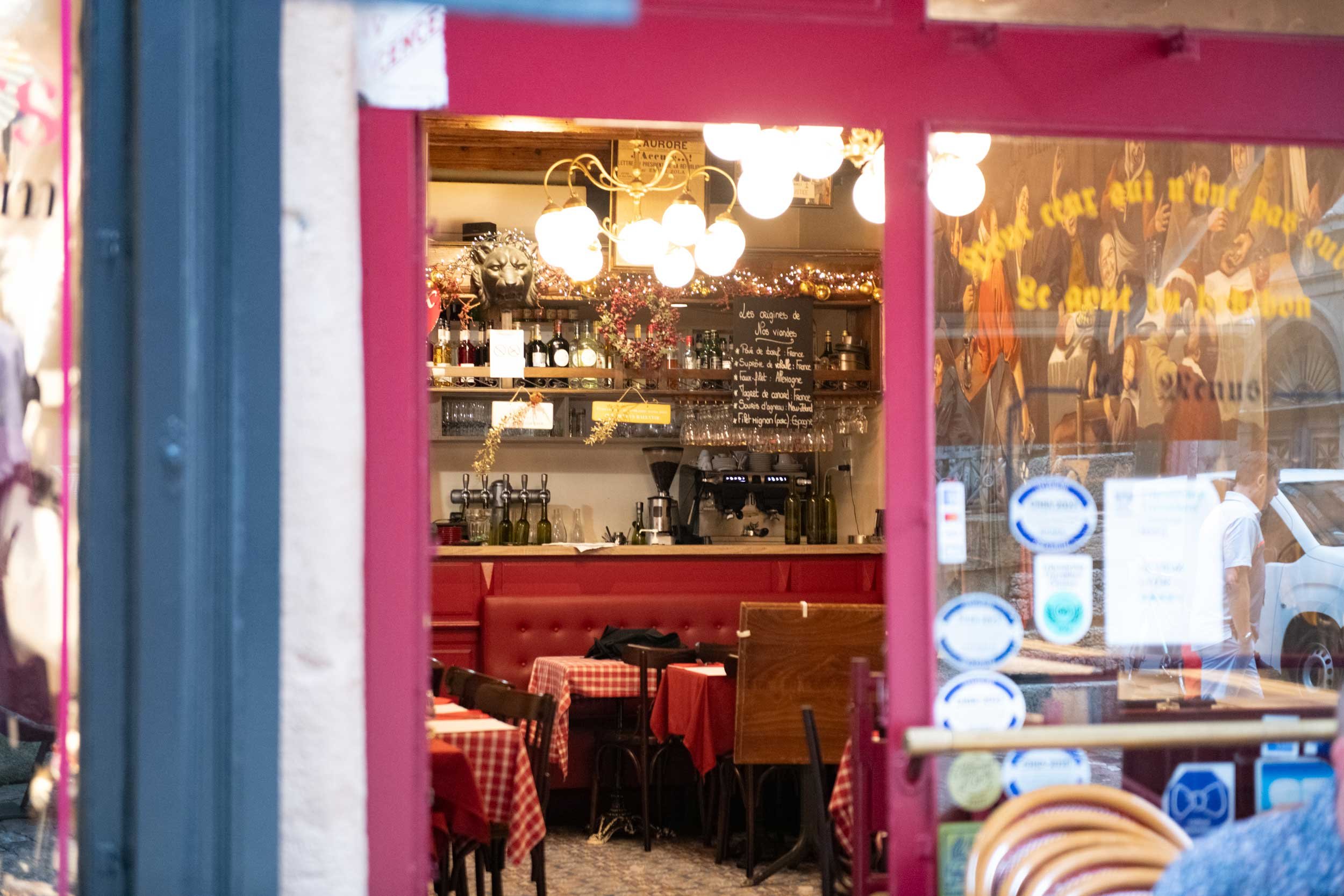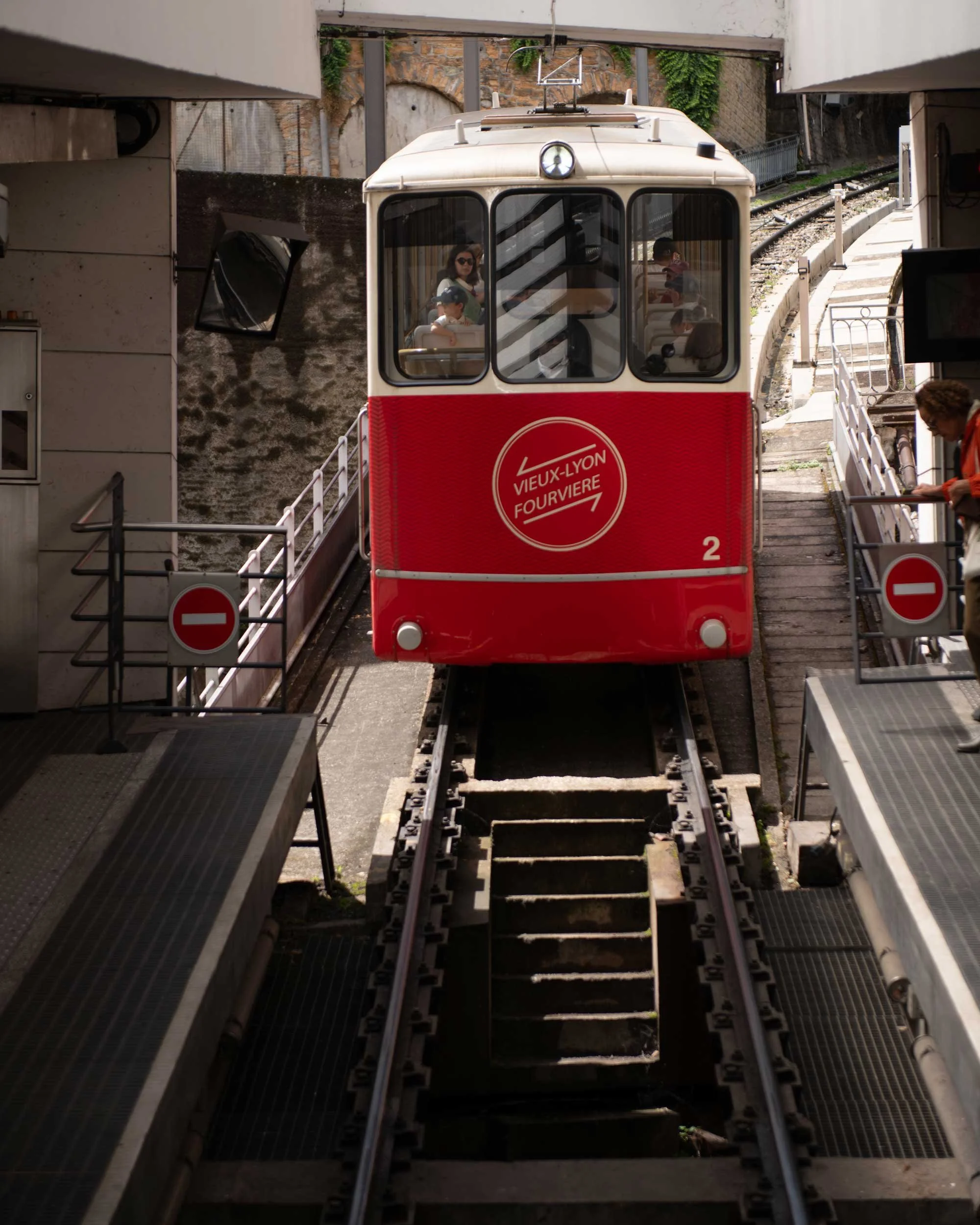Discovering traboules on a silk tour in Lyon
Having read about the silk trade and traboules, I was keen to include this experience in our short visit to Lyon. There is information to be able to visit the traboules by yourself but as our time was limited, I decided it was best to go with an expert.
After a bit of research, I chose a Get your Guide tour. It was very easy to book, pay and communication was regular and clear up to on the morning of our tour.
A rainy summer morning in Place Saint-Jean in Vieux Lyon
We had arrived earlier in the old town, for breakfast and time to wander, exploring the surrounding streets and the cathedral. However, by the time we were to meet our guide it was raining and we had sought refuge in a nearby cafe. i received a text from our guide, advising that our new meeting point was to be under the portico of Cathédrale Saint-Jean Baptiste in Place Saint-Jean. Our group of eight assembled with our guide, Yannick.
Get your Guide silk tour with Yannick in Vieux Lyon. Admiring one of the many renaissance buildings.
Yannick was great from the start. His easy going manner and fun approach made us feel comfortable. We introduced ourselves and discovered that we were an international group from Australia, USA, France, Germany and The Netherlands. Yannick began telling us the history of Lyon and as the rain eased we headed off to explore the old town.
In one of the traboules, our tour guide, Yannick explained to us that the stonemasons used various symbols to mark their work
When most people could not read, signs on the buildings described the trade taking place within.
A short history of silk
Traboule – the word is derived from Latin and basically means a passage. It is likely that the first traboules were actually constructed by the Romans, for the passage of water from the river Saône into the town.
An old water passage way
Later, they were constructed as covered passages connecting the buildings in the old town. Most streets ran parallel to the river and the traboules provided a short cut to the river allowing keeping the precious silk dry in wet weather. Wealthy merchants also had traboules to allow them to move freely through the town.
Pausing in one of the many traboules we visited, Yannick continued with the interesting history of this fascinating city.
The traboules are narrow in width but high to allow bolts of silk to be carried through the passages from the manufacture down to the boats waiting on the Saône River for transportation. These boats would arrive with other goods which could also be transported via the passageways.
Following our guide through the traboules
In the 15th century, King Louis XI introduced Italian workers to Lyon to keep up with the demand for silk by the French aristocracy.
By the mid 17th century, France was one of the world’s major silk producers and there were over 14,000 looms.
In 1801, the first programmable loom was invented by Joseph Marie Jacquard, son of a weaver, to help silk productivity.
By the 1830’s, there were more than 25,000 silk workers in the city, and as more workshops opened, the wealthy merchants began slashing the workers’ wages. The struggling workforce decided to revolt. The word sabotage came from workers throwing their sabots (wooden shoes) into the looms. Workshops were closed and the canuts (the name for the silk workers) armed themselves, demanding higher wages. The industry was at a standstill. Bloody fighting occurred and 10,000 canuts were tried in Paris, facing criminal deportation. Two more revolutions occurred in the same century but despite these, the industry continued to flourish due to the automation of weaving, into the 19th century and some silk houses still exist today. Here is link.
Some of the traboules have stairs
In WWII, the traboules were used by resistance fighters for their secret meetings, which prevented the Nazis from occupying all of Lyon.
Inside one of the traboules, a well providing water for a wealthy merchant and his neighbours
Wealthy merchants liked to display their wealth and increase the power of their social standing by building private water sources such as wells and pumps, which they shared with neighbours.
Yannick showing us another example of a water pump installed by a wealthy merchant to provide water to the neighbourhood
An example of the French renaissance architecture by Philibert de l'Orme
Below are some beautiful examples of work by Philibert de l’Orme who was one of the great masters of French renaissance architecture. He was employed by Antoine Bullioud, who had purchased two adjoining properties in Rue Juiverie and wanted a passage built between the them. Below you can see the beauty and style of Philibert’s work.
The longest traboule in Lyon runs between 54 Rue Saint-Jean and 27 Rue du Bœuf. Note the cow sculpture on facade of the building (below right).
A plaque to mark the longest traboule
In the old town of Lyon, there are many beautiful doorways, cute shops and of course the passages to discover. We were amazed that people still live within this labyrinth, so it’s important to be quiet and respectful when you visit.
People still live in apartments and use the traboules
The colours of the buildings were very reminiscent of Italy and so were the designs that included galleries and staircase towers. I was amazed at the height of these very old buildings. Some were 6 floors.
Inside the courtyard of a traboule
Walking through the dimly lit passageways would often lead us to small courtyards open to the sky. We learnt that silk workers would live, crammed into the courtyards allowing the precious looms and silks to be housed in the tall buildings. The rooms in the building were filled with light and allowed longer hours, particularly during the darker winter months.
Our favourite traboule. We loved the colour, renaissance tower, galleries and greenery.
The tall buildings were of pink, yellow and orange hues. Within the traboules, some had a lovely spiral staircase, vaulted ceilings or renaissance arches. A visit here really is like stepping back in time. It was a drab rainy day but the colours and greenery in some of the courtyards, really brightened up our visit.
Outside of the passageways, it was fun to explore the old town. We paused outside Francois Pralus, a delightful shop on Rue Saint-Jean, to inhale the delicious aromas of Brioches aux pralines roses, These are a sweet buttery bun or scroll and decorated with candied pink pralines. A speciality of Lyon. We tried one on our last morning in Lyon and it was really tasty.
We returned to Francois Pralus and purchased a packet of Pink Pralines (sugar coated nuts) after the silk tour.
Window shopping or as the French would say faire du lèche-vitrines (licking the shop windows). Francois Pralus, is a delightful shop on Rue Saint-Jean Later we returned to purchase a bag of sugar coated pralines.
During the French revolution, many religious statues lost their heads. Like this one of the Three Marys
The old town is full of interesting shops and quaint restaurants to explore
Our tour with Yannick lasted about two hours and we really enjoyed his mix of history with a fun presentation. If you would like to do this tour, I recommend that you book ahead.
Following our tour, it was time for some lunch and a rest to revitalise for an afternoon of more exploring. Please join me next time as we venture to other parts of the city. À bientôt!




